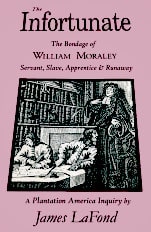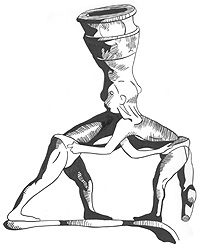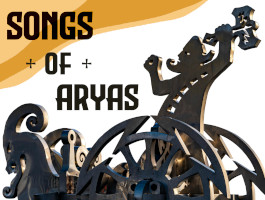1. Vagrancy laws, according to which any adult not being in possession of identification, and in certain municipalities also money, may be incarcerated, pending a hearing before a court commissioner, have evolved from the Vagabond Act of 1592, which outlawed homelessness, drunkenness, pennilessness, debt, and the unforgivable crime of being an orphan. This law formed the basis for the enslavement of hundreds of thousands over more than 200 years. Ask any homeless man, being homeless is against the law in most American municipalities.
2. Keep in mind that anytime you walk or drive in an American municipality, you are subject to detention and arrest for the crime of failing to display a slave pass. Your identification and passport are modern adaptations of slave passes and freedom papers that were first issued to white slaves in the 1600s and 1700s, and became a regular focus of black slavery in later times.
3. Spanking among whites, paddling in high school up until the 1980s, and the still entrenched African American fetish for “whooping” their children with belts and beating them with shoes, all stem directly from enslavement of plantation workers, sailors and soldiers in colonial America, which stemmed from the habit of beating “apprentices” in England. The Indians used to think that the white habit of beating children was positively insane, and seemed to think this contributed to most whites being such poor warriors. For the record, Indians generally regarded blacks as an inferior type of white person.
4. Chain gangs, prisons, prison farms and other correctional institutions, represent a seamless evolution in the housing of the unwanted lower classes in America, which has the highest per capita inmate population in the world.
5. The belief that one drop of African blood makes a person black, and the denial of mixed-race status to people of African descent is a hold over notion intentionally promoted by slave masters of the late 1600s, who went to great pains to insure that whites and blacks would not rise up together again. This notion has proved to be so successful at self-perpetuating that it is an ineradicable aspect of American life. Most astonishingly, this slave master notion is nowhere more strongly held than among blacks and black-identified mixed-race people.
6. Branding of cattle and the cosmetic branding fetish of counter culture types, is descended from the custom of English plantation masters branding the faces of runaway indentured servants. The first animal to be branded in English North America was not a bull, steer, cow or a horse, but a white boy.
7. Bounty hunting is a direct evolution of slave catching, with bounty hunters governed by insurance laws and empowered to kick in the doors of perfectly innocent home owners on the suspicion that a fugitive might be at the residence.
8. Repo men are the other evolution of the slave catcher.
9. The term kidnapping comes from the Scottish kid-nabbing, and is so listed as felony crime in numerous legal codes.
10. Want ads in American newspapers originated in weekly gazettes, where slave masters advertised the appearance and crimes of runaway slaves and offered rewards for the return of their property.
11. Hillbilly, redneck, jailbird, vagabond, red leg and white trash are all pejorative terms for escaped and freed white slaves used by the planter class to demean and ostracize those who had left the slave economy for the less lucrative free economy.
12. Rewards offered by the FBI and other law enforcement agencies, for information leading to the arrest or conviction of a suspect, are directly evolved from slave catching bounties.
13. The tradition of getting drunk on New Year’s Eve—as an all out debouche, such as it is practiced in most American communities—is an evolution of the practice of slave holders encouraging their slaves to spend all of the money they had earned working side jobs throughout the year on alcohol, which was normally denied slaves, but permitted them in excess at the end of the year. According to Frederick Douglas, the real reason for this slave master instigated debauchery was the inevitable hangover, which would convince the sickened slave 1.) that enjoyment of life brought dire consequences, and 2.) to encourage the slave to make a resolution to work hard and serve loyaly throughout the New Year, without finding comfort in drink.
14. Gun control laws were fist instituted in Virginia and New England, with the stipulated aim being the disarmament of the unfree classes. It was a cornerstone aspect of every American Plantation, that only land owners, slave masters, overseers, and slave catchers might be armed. These included specific legislation barring blacks and Indians from serving in militias or having firearms. The general ratio of armed free men to unarmed unfree men in the Plantations was 1 to 10, and accounted for the ease with which small bands of Indian warriors were able to wipe out entire communities without suffering casualties. An agent of the King, answering his monarch's suggestion that the Virginia servants be armed to help defend their masters' plantations, stated that it was not possible to do so.











